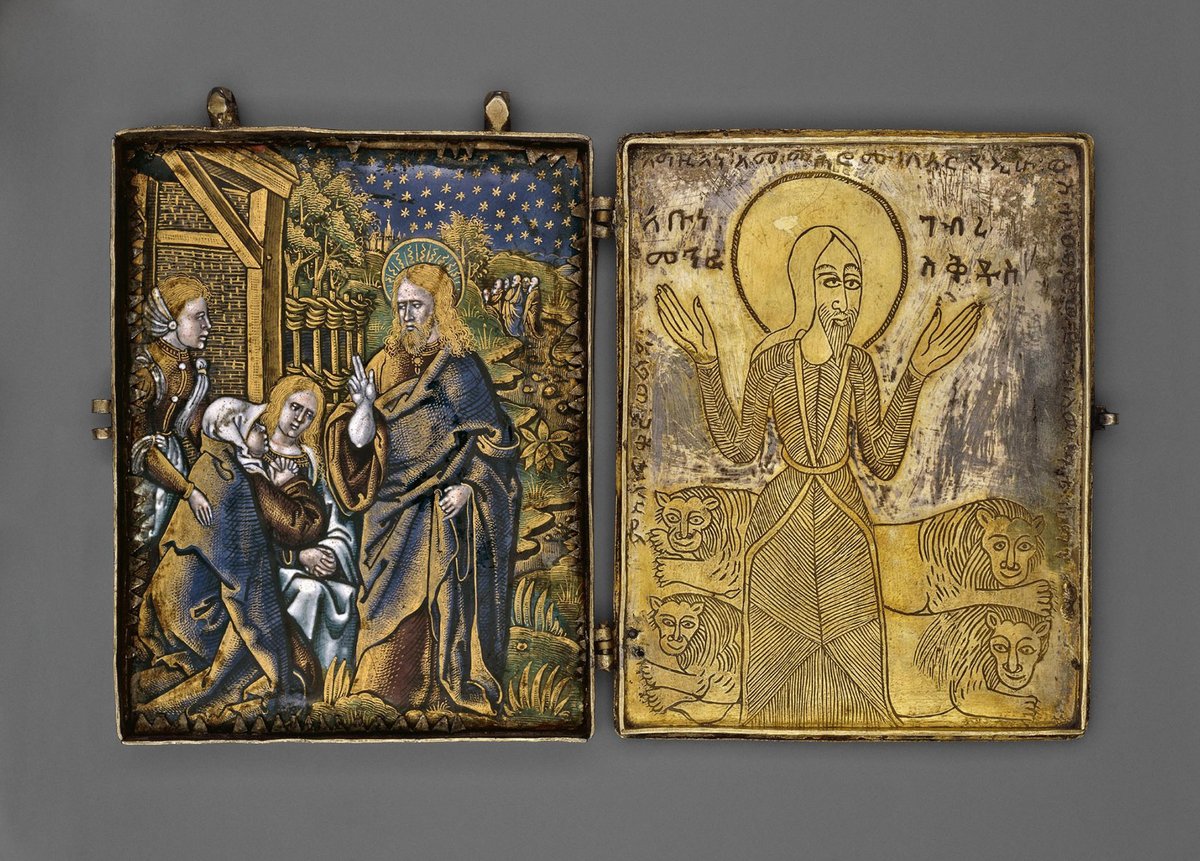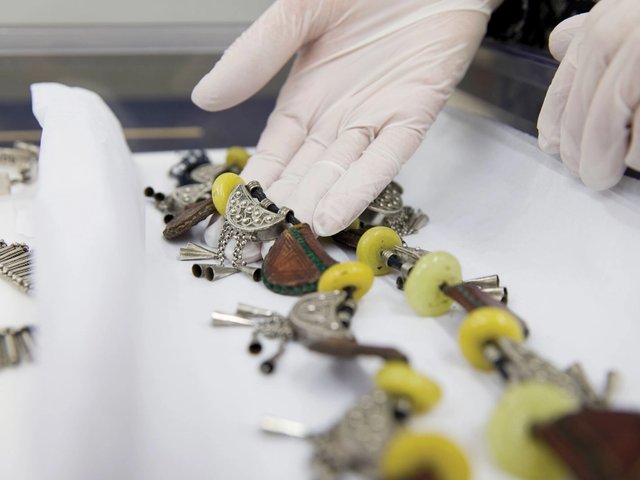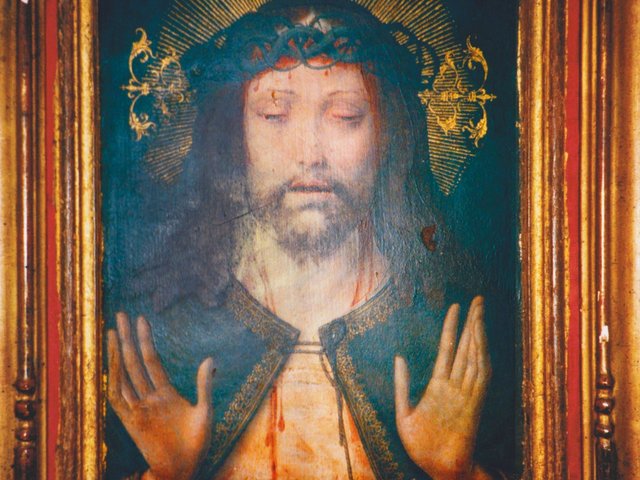An exquisite diptych which links Albrecht Dürer and Christian Ethiopia is being investigated at the British Museum, raising a fascinating story of cross-cultural links. One side of the diptych was enamelled in France and then probably sent to Portugal, from where Jesuit missionaries carried it more than 8,000km to the Horn of Africa by around 1600. The other half, crafted in Ethiopia, depicts an Orthodox hermit saint with four lions.
Centuries later, the diptych was likely worn by an Ethiopian chief as a talisman to protect him from danger (it has two small hooks at the top and was probably hung from the neck). However, it failed in this task and the man was killed by British troops at the battle of Maqdala in 1868. The diptych was then looted from his still-warm body, auctioned off as war booty and acquired three months later by the British Museum.
The diptych had received little attention, but it has recently been subjected to scientific scrutiny and is now being thoroughly researched. So many questions remain to be resolved.
The left side of the small closable diptych (11cm high and 8cm wide) is a polychromed enamel copy of Dürer’s 1511 woodcut Christ Taking Leave of his Mother, from his series of the Small Passion. There are minor differences from the Dürer, since the enamelled image has been transformed into a night-time scene with stars added in the sky, and Jesus has been given a halo. Dürer’s distinctive monogram has been omitted. The enamel is slightly smaller than the print, so the image had not been simply traced.
Alula Pankhurst, a British scholar working in Addis Ababa, believes the hybrid diptych “says a lot about how foreign icons get incorporated and merged with Ethiopian traditions”.
From a Limoges workshop
The enamel plaque was made in the western French town of Limoges, which then produced the finest pieces of this type. It has even been possible to specify the maker, known as the Workshop of the Santa Cruz de Coimbra Small Passion. Suzanne Higgott, a curator at London’s Wallace Collection, has identified 101 enamelled Dürer images from this source (24 plaques of these are now in her museum and 26 at the Museu Nacional Soares dos Reis in Porto).
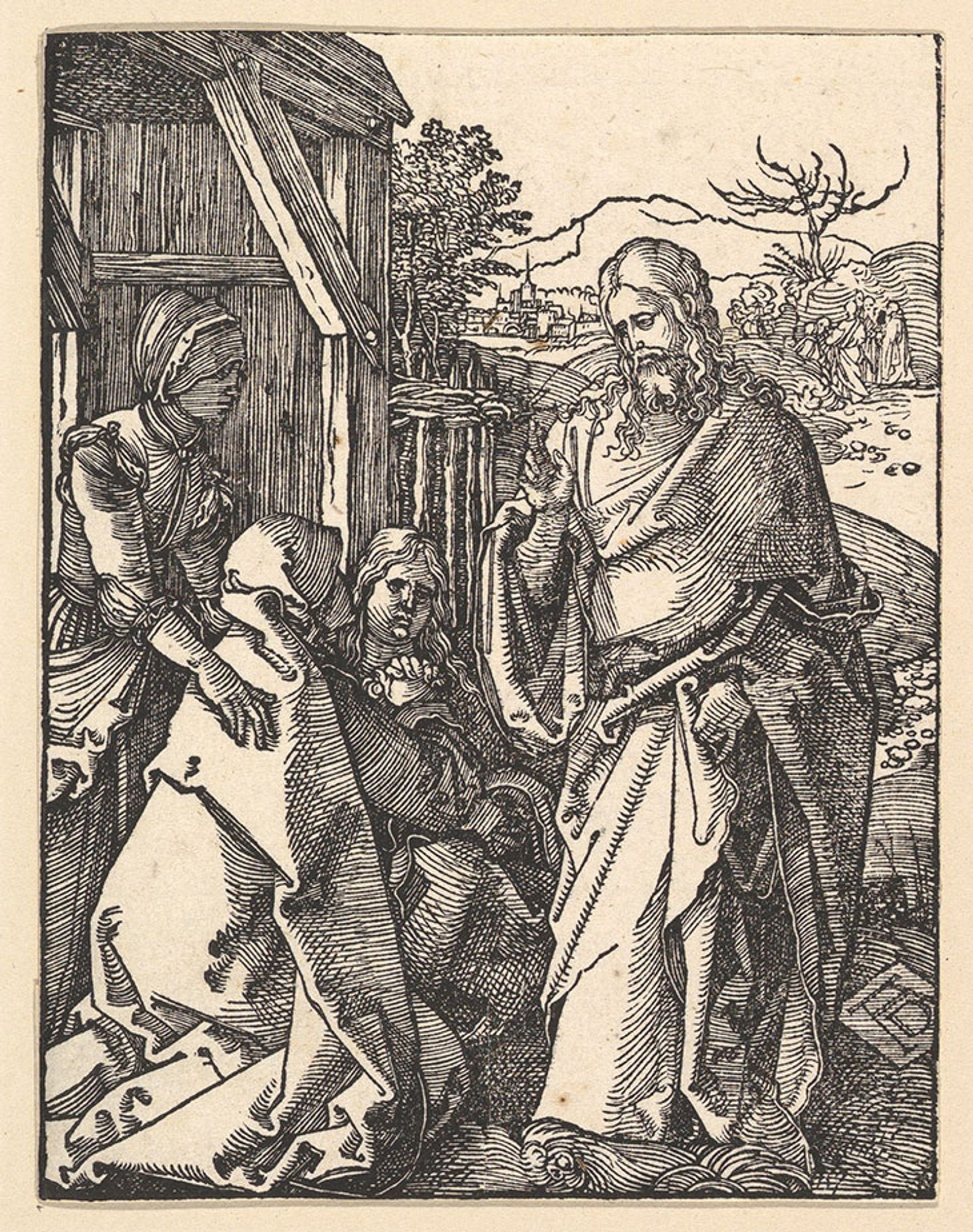
Dürer’s 1511 woodcut Christ Taking leave of his Mother
Metropolitan Museum of Art/Public Domain
The British Museum curator Zoe Cormack believes that their enamel dates from between 1570 and 1610. It is not known how it reached Ethiopia, but it most likely was sent from Limoges to Portugal, and from there taken to Ethiopia by Jesuit missionaries. This was probably in the late 1500s or possibly the very early 1600s.
Verena Krebs, a German historian and specialist on Ethiopia, believes that the British Museum’s enamel was most likely presented to an Ethiopian king or noble, who then donated it to a church or monastery to “demonstrate their power and piety”.
The right side of the diptych is an engraving on silver gilt. This depicts Saint Gabra Manfus Qeddus, who is believed to have been born in the ninth century in Egypt. Legend has it that, at the age of 300 years, he was transported to Ethiopia on a winged chariot, accompanied by his companion lions. He is among the country’s two most venerated saints.
In the engraving the saint is clothed only in his own long hair, with four benign lions at his feet. Inscribed on the image are several texts in Ge’ez, the ancient Ethiopian language.
The engraving is the same size as the enamel, so it was presumably created specifically to go with the Dürer image. The juxtaposition is fascinating. Christ and the saint face different directions. The saint’s head and halo are much larger than Christ’s, although their bodies up to the shoulders are almost the same height. Their right hands are in a similar position, except for the two small fingers. The enamel and engraving demonstrate the very different styles of European and Ethiopian Christian art.
It is uncertain when the engraving was made and joined with the Dürer enamel, but this was most likely in the late 1700s or possibly the early 1800s. The exterior case is decorated with an unusual eight-pointed star made up of two squares. Who commissioned the diptych, and where this was done in Ethiopia, remains unknown.
It is likely that in the 1860s the diptych was seized by emperor Tewodros from a church or monastery at an unidentified location in Ethiopia and taken to his fortress at Maqdala. Krebs describes this as “plundering” for political and religious reasons. When British troops conquered Maqdala on 17 April 1868 the diptych was “taken from the body of a chief”, according to the British Museum archaeologist attached to the military operation, Richard Holmes. The deceased chief was presumably one of the emperor’s closest supporters.
Holmes then bought the diptych on 20-21 April at the army’s sale of loot seized during the battle three or four days earlier. Holmes later described the enamel as depicting “three maids” with Christ, rather than specifying the trio of Marys who are mentioned in the Gospels. He paid 230 rupees for the diptych (then £23).
It is unclear whether Holmes, an experienced art historian, recognised the enamel as based on a Dürer print. When he bought it at the Maqdala sale, he would have seen it as European, and therefore intriguing. However, the Dürer attribution is not mentioned when on his return to London he submitted the financial accounts of his 12 purchases on behalf of the British Museum, suggesting that he had not then spotted the connection.
A display of Maqdala objects was opened at the British Museum later in 1868, although it is unclear whether this lasted months or years. There are no subsequent records of the diptych being shown until it was lent for a temporary exhibition, The Christian Orient, organised by the British Library in 1978. Since 2009 the diptych has been displayed in the museum’s Coptic corridor, which runs between the Egyptian mummies and the prints and drawings galleries.
Research on the diptych raises the intriguing possibility that other enamel plaques based on Dürer’s prints from this set were sent to Ethiopia more than four centuries ago. It seems that they were originally produced in sets of 36, representing all the images of the Small Passion.
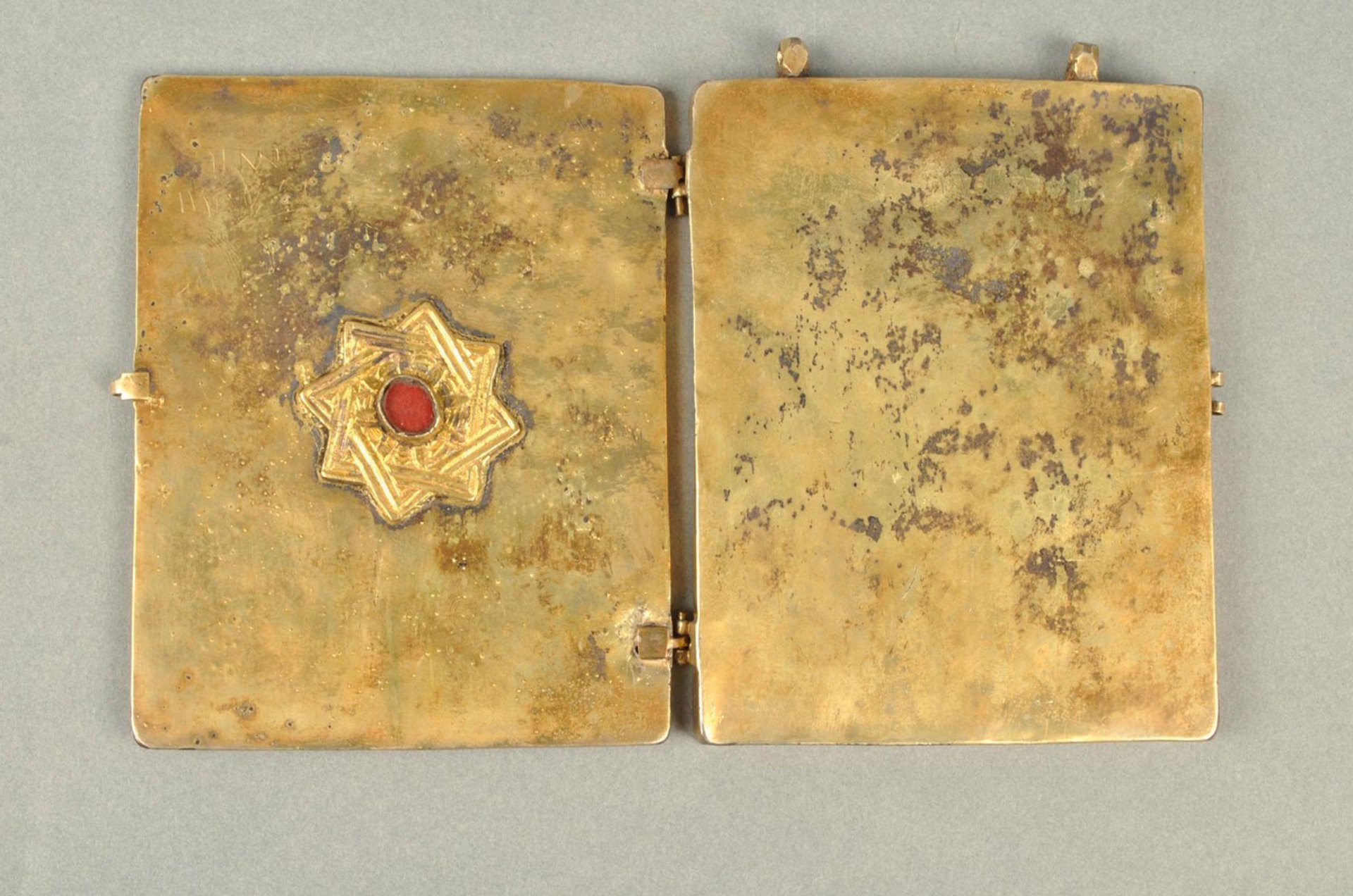
The British Museum diptych
Trustees of the British Museum
Zoe Cormack believes that it is “quite possible that a full set went to Ethiopia where they might have been intended for an altarpiece—and the plaques were later disassembled and dispersed”. The gift of the full 36 would only have been made by missionaries to a very powerful figure.
Subjects from Dürer’s Small Passion
Tantalisingly, two enamelled Limoges enamels are recorded (but not illustrated) in a 1963 article by the French archaeologist Guy Annequin: one of “Adam and Eve” and the other of the “Arrest of Christ”. Although Annequin did not name Dürer, these are both subjects represented in the Small Passion. Equally important, the dimensions of the plaques recorded in 1963 match those of the British Museum’s diptych. However, it seems these may have reached Ethiopia by the 1530s, so these would have been part of an earlier set, rather than from the museum’s one.
In 1963 the pair of enamels were at the ancient monastery of Dima Giyorgis in Gojjam, in north-west Ethiopia. There are no further records of them having been seen by art historians, although in 2012 Krebs learned from priests that they were safe in the monastic treasury. Last November there were unconfirmed reports that Dima Giyorgis was attacked during fighting between federal government troops and anti-government forces in the region. The reports suggest that the monastery’s treasury-museum was looted and buildings set alight and destroyed. If so, this would represent a major cultural loss.
Items looted at Maqdala at the British Museum are “contested”, with calls for their restitution. A museum statement points out that during the past five years there have been discussions with representatives of Ethiopia, “including requests for the return of sacred objects”. The museum “remains open to continuing dialogue” and has maintained “a longstanding and cordial relationship with senior members of the Ethiopian Orthodox Church, both in Ethiopia and in London”.


